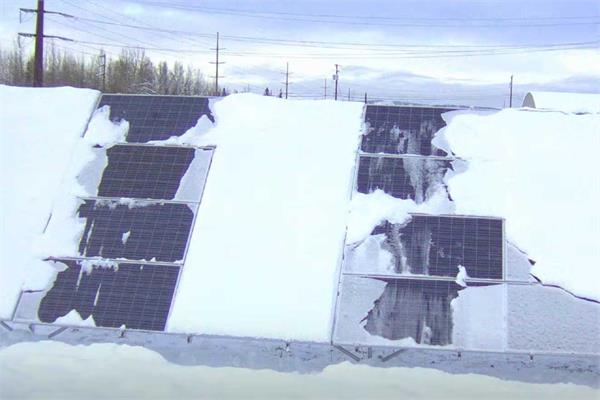
The University of Michigan has demonstrated a clear coating that reduces snow and ice accumulation on solar panels.
A team of researchers from the University of Michigan has developed an inexpensive clear coating that could prevent snow and ice accumulation on solar panels, improving their productivity also in cold climates by up to 85%, as demonstrated in early testing that took place in Alaska.
The coating is mostly composed by PVC or PDMS plastic and silicon or vegetable-based oils. It can be sprayed or brushed on in cold weather and, in its current iteration, can keep shedding snow and ice for up to a whole year.
“Renewable energy is really taking off right now, but snow is a huge problem in northern climates. Solar panels might lose 80 or 90% of their generating capacity in the winter. So, figuring out a way for them to continue generating energy throughout the year was an exciting challenge,” stated Anish Tuteja, the U-M professor of materials science and engineering who led the study in collaboration with Sandia National Laboratories and the University of Alaska. “Ice is relatively dense and heavy, and our previous coatings used its own weight against it. But snow can be 10 times less dense than ice, so we weren’t at all certain that the tricks we use on ice would translate to snow.”
A precise combination of low interfacial toughness and low adhesion strength
The researchers employed two key properties that have already powered ice-shedding coatings in the past: low interfacial toughness and low adhesion strength. Low surface adhesion is suitable for small areas, but it needs more force to slide snow and ice off bigger surfaces. Low interfacial toughness allows to create cracks between the ice and the panel that propagate along it, regardless of its size, breaking the ice and snow free. The team has then focused on accurately balance the two in order to provide snow and ice repellence for both small and large surfaces.
The scientists from the University of Michigan collaborated with the University of Alaska to test the material on a solar field in Fairbanks (Alaska), applying the coatings to a subset of panels that were monitored by automated cameras for almost two weeks. The tests showed that the coated panels had an average snow and ice coverage of approximately 28% over an entire winter season, in comparison to about 59% for the uncoated panels. However, the team plans to tweak the coating further, with the aim of developing a coating that can last at least five years.
“As the cost of solar energy has dropped and profitability has climbed, much of the growth in solar energy in recent years has been in northern states, where snow is common. Snow-phobic coatings, if we can demonstrate their long-term efficacy, will make solar power more reliable and more affordable in snowy regions, helping accelerate our nation’s transition to a more solar-dominated energy economy,” commented also Laurie Burnham, the project’s principal investigator.
The coating was developed as part of a project led by Sandia National Laboratories, a U.S. Department of Energy research and development lab, with funding provided by the DOE’s Solar Energy Technologies Office. The study is published in Advanced Materials Technologies. Other researchers on the project were former U-M materials science and engineering graduate researcher Abhishek Dhyani; Christopher Pike and Erin Whitney at the Alaska Center for Energy and Power at the University of Alaska; and Jennifer Braid at the Photovoltaics and Materials Technology Department of Sandia National Laboratories.
Video from the test in Alaska